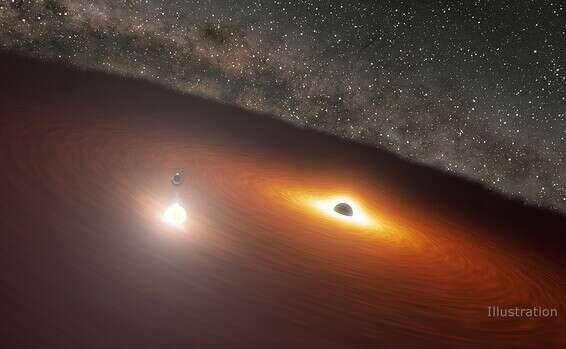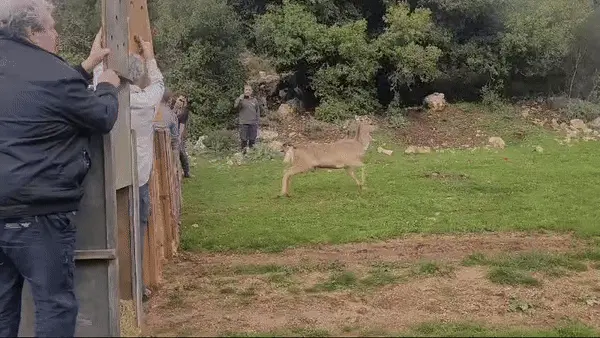With 18 billion times the mass of our sun: the US Space Agency has observations on two black holes and a huge burst of light
Photo: NASA / JPL-Caltech
Although black holes cannot be directly observed in space, this does not mean that they are inactive and do not interact. The simulation of a unique event was published this week by the US Space Agency, NASA, and its observations taught scientists even more about the unique physical realities these superstars generate.
It is a dance of a small black hole around a larger black hole that produces twice a 12-year burst of lighter light than any Milky Way galaxy. The play was viewed during an observation of the distant galaxy OJ 287 that hosts one of the largest black holes ever observed. This is a huge black hole with a mass of 18 billion times our sun. This huge black hole surrounds a smaller black hole that has a mass of 150 million times our sun.
The little black hole orbits his older brother twice in 12 years, and every time he penetrates the huge gas box surrounding his brother, he produces a flash of light from a star of Tyrellion, which means greater glare than the light emitted by the Milky Way galaxy. This flash takes 3.5 billion years to reach Earth.
Not a circle but a rectangle
The movement of the little black hole around his big brother is not normal and is rectangular and affected by the gravity these huge sky elements produce on each other. Either way, the little hole crosses the big black hole's gas disk twice in 48 hours on either side of the big black hole, creating two huge blast of light blasts moving in different directions in space.
Because of the irregularities of the black hole movement, it took many decades to predict the appearance of these flashes, and it was only in 2010 that scientists were able to present a model that predicted these eruptions for up to three weeks. Later in 2018, scientists from the Tata Institute research group in Mumbai published a more accurate prediction that its deviation is about 4 hours. A model that proved to be correct according to the Spitzer observations this year, NASA's spacecraft was spaced 254 million miles away from Earth.
The difficulty in predicting the motion of the two objects
While a comet's orbit moving in the solar system is relatively easy to predict because of the gravitational pull of the sun, and of the planets around it, black stars need to take into account the distortion of space itself by gravitational waves. This is an aspect of Einstein's general theory of relativity that was first demonstrated in a LIGO project in 2018. This means that the movement of black holes not only produces gravity but warps space itself, the very space of the universe.
Because of this warp, the movement of the small black hole is more difficult to predict. What helped to calculate is the theory of a group of scientists led by the great scientist Stephen Hawking, who predicted in the 1960s what the space around a black hole would look like and what the point could be when objects could already escape from the sheer gravity of such a huge space bone, and how the little black hole could slip around the hole anyway. The big black.
Without going into complex details, this set of calculations includes a theory about the symmetry of this giant star axis and it seems that the movement between the two current black holes proves the argument of this group of scientists.














